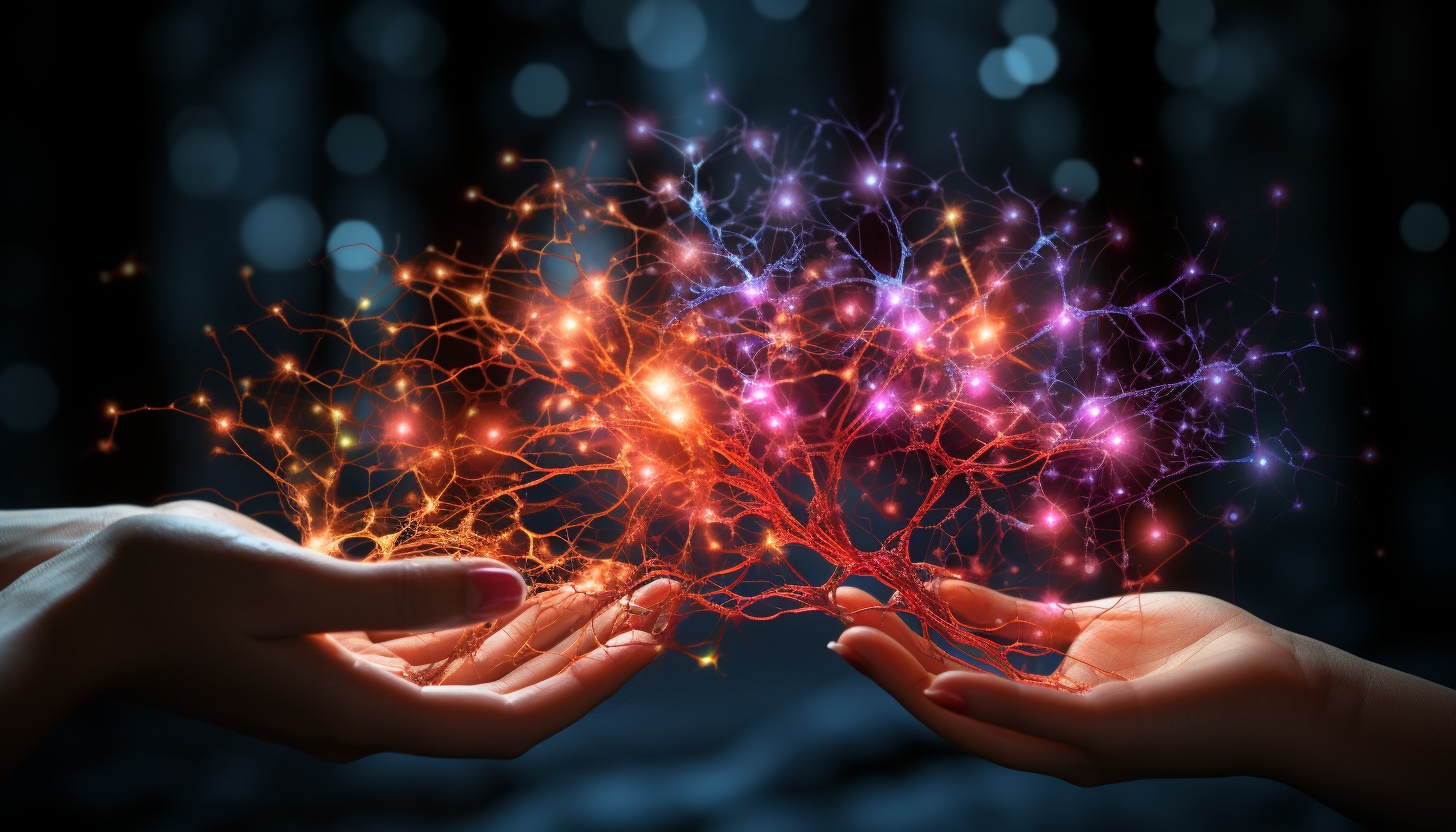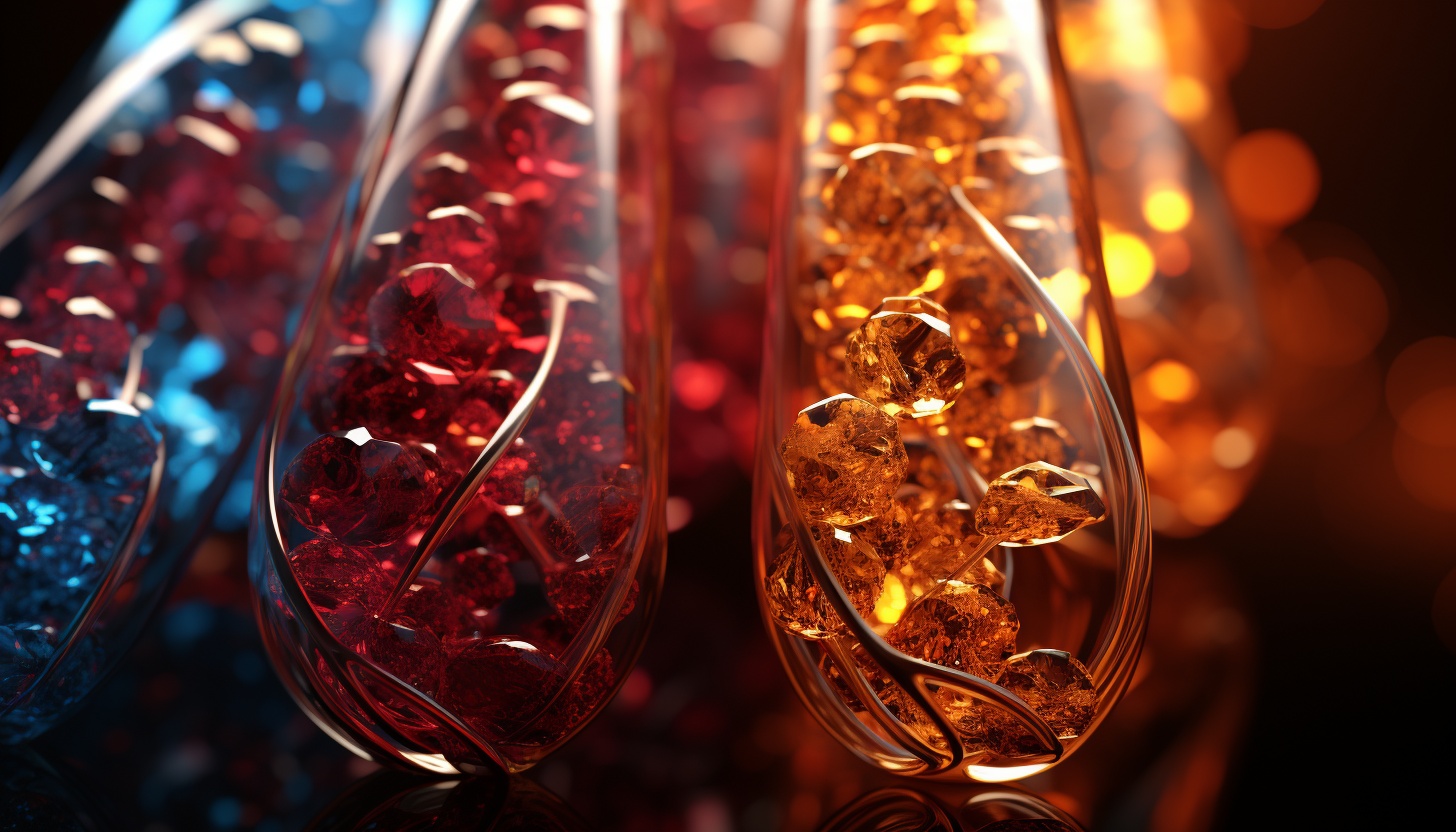
The Science of Attraction: Unveiling the Secrets Behind Chemistry
Imagine stepping into a mysterious laboratory where the secrets of attraction are being unraveled.
In this article, we’ll take you on a journey through the fascinating world of the science of attraction, where chemistry plays a pivotal role.
Prepare to explore the hidden powers of pheromones, neurotransmitters, and physical appearance.
Delve into the psychological factors and discover the undeniable influence of similarity.
Get ready to unlock the secrets behind that undeniable spark.
The Role of Pheromones

You might be surprised to learn that pheromones play a significant role in the science of attraction. These chemical messengers, secreted by animals and humans, have the power to influence our behavior and ignite feelings of attraction.
Pheromones are detected by a specialized organ in the nose called the vomeronasal organ (VNO), which sends signals to the brain’s limbic system, the region responsible for emotions and instinctual behaviors.
Research has shown that pheromones can affect various aspects of attraction, including sexual attraction, mate selection, and social bonding. In fact, studies have found that women are more attracted to the scent of men who’ve different immune system genes, as this increases the chances of producing offspring with a stronger immune system.
Furthermore, pheromones can also impact our perception of others’ attractiveness. A study published in the journal Psychological Science found that women who were exposed to a synthetic male pheromone rated photographs of men’s faces as more attractive compared to those who weren’t exposed.
While pheromones may not be the sole factor in attraction, they certainly contribute to the complex chemistry between individuals. So, the next time you feel a strong and inexplicable pull towards someone, remember that it might just be the work of pheromones at play.
Neurotransmitters and Attraction

The role of neurotransmitters in attraction is crucial, as they play a pivotal role in the complex interplay of emotions and desires between individuals. These chemical messengers in the brain help to regulate our mood, emotions, and behaviors, including those associated with attraction and love.
Neurotransmitters such as dopamine, serotonin, and oxytocin have been found to be particularly influential in the process of attraction. Dopamine, often referred to as the “pleasure chemical,” is associated with feelings of reward and motivation. It is released during pleasurable experiences, such as being around someone you are attracted to. Serotonin, known for its role in regulating mood, also plays a part in attraction. It helps to create a sense of well-being and contentment, which can contribute to feelings of attraction.
Oxytocin, often called the “love hormone,” is released during physical touch, intimacy, and bonding. It promotes feelings of trust, connection, and attachment between individuals. This hormone is particularly important in the early stages of attraction and is thought to help foster emotional closeness and bonding.
In summary, neurotransmitters are vital in attraction as they modulate our emotions and desires. Dopamine, serotonin, and oxytocin all contribute to the complex chemistry of attraction and play a significant role in the formation and maintenance of romantic relationships.
| Neurotransmitter | Role in Attraction |
|---|---|
| Dopamine | Feelings of reward and motivation |
| Serotonin | Creating a sense of well-being and contentment |
| Oxytocin | Promoting trust, connection, and attachment |
The Influence of Physical Appearance

When it comes to attraction, the impact of physical appearance can’t be underestimated. Research has consistently shown that physical attractiveness plays a significant role in initial attraction and relationship development. Numerous studies have found that people tend to be more drawn to individuals who are physically attractive. Features such as symmetrical faces, clear skin, and a healthy body weight are often seen as desirable traits.
There are several reasons why physical appearance holds such influence in attraction. One explanation is that physical attractiveness is often associated with good health and genetic fitness. Evolutionary psychology suggests that individuals with more attractive physical traits are perceived as healthier and more likely to produce healthy offspring. This preference for attractiveness may be deeply ingrained in our evolutionary history.
Furthermore, physical appearance also influences our social perceptions and judgments. Studies have shown that individuals who are physically attractive are often perceived as more confident, sociable, and successful. These perceptions can lead to positive biases and increased opportunities for social interaction.
It is important to note that physical appearance is just one aspect of attraction. While it may initially capture our attention, long-term compatibility and emotional connection are essential for sustaining a healthy relationship. However, the influence of physical appearance in attraction shouldn’t be overlooked, as it plays a significant role in our initial evaluation and interest in potential partners.
Psychological Factors in Attraction

Psychological factors play a significant role in attraction, shaping our preferences and influencing our choices of romantic partners. While physical appearance may initially catch your eye, it’s the psychological factors that truly determine the long-term compatibility and success of a relationship.
Here are three key psychological factors that contribute to attraction:
– Similarity: Humans tend to be attracted to those who are similar to themselves. Shared values, beliefs, and interests create a sense of connection and understanding. Research has shown that couples who are more similar in personality traits, attitudes, and values are more likely to have lasting relationships.
– Emotional Intelligence: The ability to understand and regulate emotions is highly attractive. People who are emotionally intelligent are better equipped to handle conflicts, communicate effectively, and provide support to their partners. This leads to healthier and more fulfilling relationships.
– Sense of Humor: A good sense of humor is often considered an attractive quality. Laughter creates positive emotions and bonds people together. Sharing jokes and enjoying humorous moments can enhance relationship satisfaction and strengthen the bond between partners.
The Power of Similarity

To truly understand the power of attraction, it’s essential to recognize the significant role similarity plays in shaping our preferences and choices of romantic partners. It turns out that we’re naturally drawn to people who are similar to us in various ways. Research has shown that individuals tend to be attracted to those who share similar values, beliefs, backgrounds, and even physical appearances.
One reason why similarity is so influential in attraction is the concept of familiarity. We’re more comfortable and at ease with people who are like us because they’re familiar. When we encounter someone who shares our interests or has had similar life experiences, it creates a sense of connection and understanding. This familiarity fosters positive feelings and enhances the likelihood of forming a romantic bond.
Additionally, similarity promotes compatibility and reduces conflict in relationships. When two people have similar values and beliefs, they’re more likely to have similar goals and outlooks on life. This alignment can lead to better communication, shared interests, and a greater sense of harmony in the relationship.
Furthermore, research suggests that we’re subconsciously attracted to people who resemble us physically. This phenomenon, known as assortative mating, explains why couples often have similar facial features, body types, or even hair color. It’s believed that this preference for physical similarity is rooted in our desire to find a mate who shares our genetic makeup, increasing the chances of successful reproduction.
Conclusion
You’ve just scratched the surface of the captivating world of attraction. From the mysterious role of pheromones to the intricate dance of neurotransmitters, science has only begun to unravel the secrets behind chemistry.
But don’t worry, there’s so much more to discover. So hold on tight, because the journey into the science of attraction is just beginning, and it’s bound to leave you spellbound.
Stay tuned for more mind-blowing revelations that will change the way you perceive the power of attraction.






